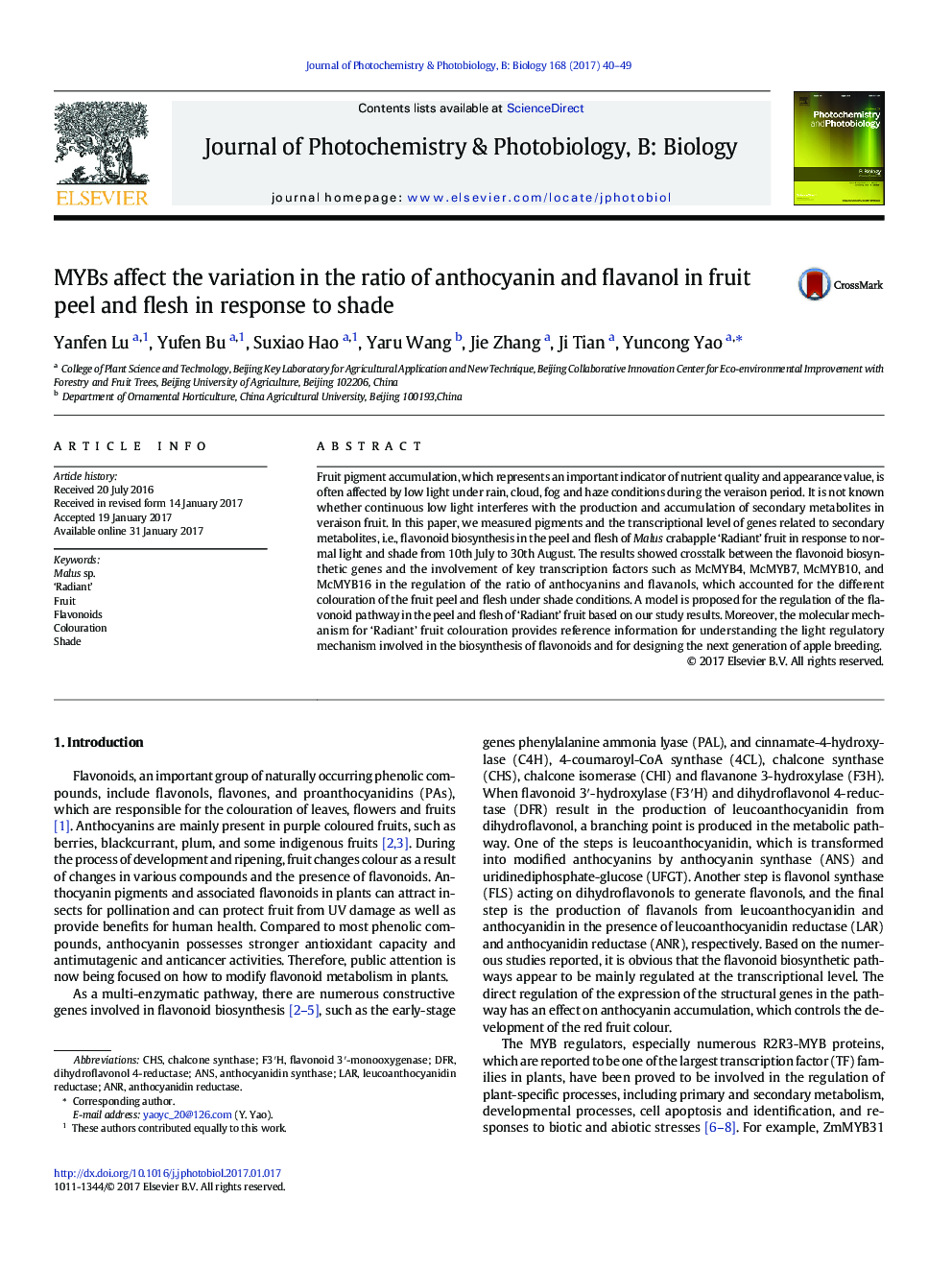| کد مقاله | کد نشریه | سال انتشار | مقاله انگلیسی | نسخه تمام متن |
|---|---|---|---|---|
| 4754531 | 1418065 | 2017 | 10 صفحه PDF | دانلود رایگان |

- Change of light leads to different pigments accumulation.
- MYBs activate the variation of the ratio of anthocyanin and flavanol.
- The regulation mechanism in peel is different from that in flesh.
Fruit pigment accumulation, which represents an important indicator of nutrient quality and appearance value, is often affected by low light under rain, cloud, fog and haze conditions during the veraison period. It is not known whether continuous low light interferes with the production and accumulation of secondary metabolites in veraison fruit. In this paper, we measured pigments and the transcriptional level of genes related to secondary metabolites, i.e., flavonoid biosynthesis in the peel and flesh of Malus crabapple 'Radiant' fruit in response to normal light and shade from 10th July to 30th August. The results showed crosstalk between the flavonoid biosynthetic genes and the involvement of key transcription factors such as McMYB4, McMYB7, McMYB10, and McMYB16 in the regulation of the ratio of anthocyanins and flavanols, which accounted for the different colouration of the fruit peel and flesh under shade conditions. A model is proposed for the regulation of the flavonoid pathway in the peel and flesh of 'Radiant' fruit based on our study results. Moreover, the molecular mechanism for 'Radiant' fruit colouration provides reference information for understanding the light regulatory mechanism involved in the biosynthesis of flavonoids and for designing the next generation of apple breeding.
Journal: Journal of Photochemistry and Photobiology B: Biology - Volume 168, March 2017, Pages 40-49